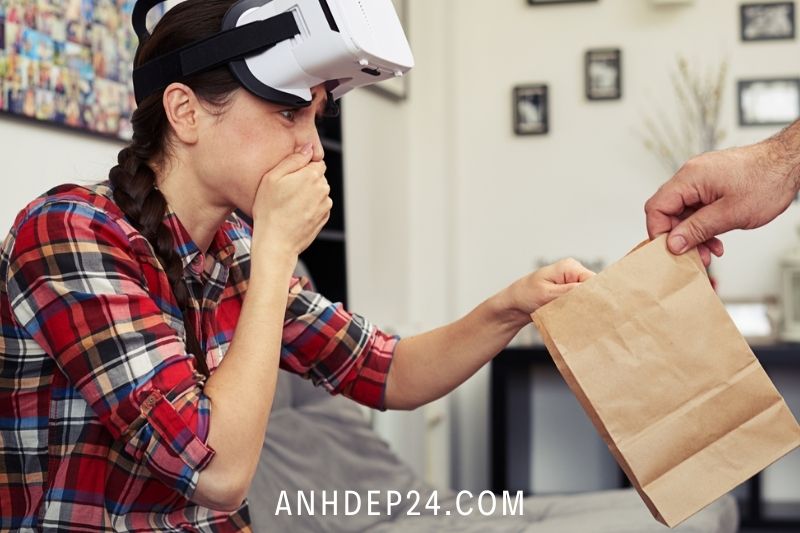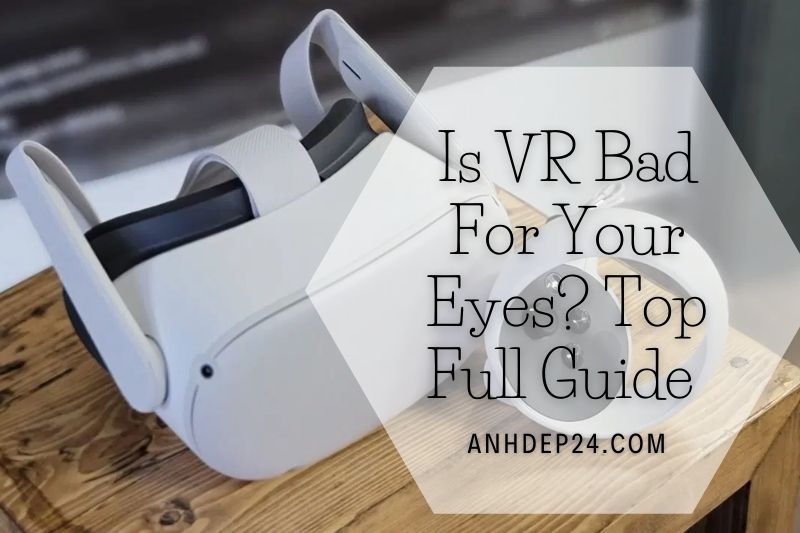There is no definitive answer to the question: is VR bad for your eyes. VR effects on eyesight depend on several factors, such as how long you use VR and your eyesight. Some people report eye fatigue and headaches after using VR for a while, but there is not enough research to say whether or not VR is bad for your eyes.
How Does Virtual Reality Work?

Immersive, alluring virtual worlds are the ultimate digital experience. They are currently a major focus in the news. Oculus, a recent startup, and Sony, Samsung, and HTC are all major players in the virtual reality (or VR) headset business. Google even has a cardboard VR headset, which you can use to get into virtual reality with your smartphone.
These headsets monitor your head movement in three dimensions. They can be used to plunge you into a computer-generated environment.
How VR Might Cause Eye Strain
Two small LCD monitors are used in VR headsets. Each one is projected at one eye. This creates a stereo effect that gives the user the illusion of depth. Experts have been pondering the possibility of eye diseases due to the proximity of the screens to the eyes.
Eye strain can occur when you focus on one thing for a prolonged period. This could be the case if you’re watching a movie, staring at your smartphone or computer all day. Wearing specialized lenses like Crizal or Eyezen can help reduce digital eye strain and eliminate the glare from digital devices.
What Are the Risks for Kids?
The most dangerous VR environment for kids is likely to be the one that is primarily focused on the video game market, both console-based and mobile. Young gamers make up 26% of the market. Focus, tracking, and depth perception continue to develop into middle school.
Children could develop digital eye strain and early myopia. This can be avoided by having your child’s eyes checked before school begins, taking 20-second breaks from their screens every 20 minutes, and making it mandatory that they take longer breaks for physical activities.
What Are the Risks for Adults?
Adults should also be concerned about feelings of nausea and disorientation, known as virtual reality sickness. There are also problems with the 3D stereo effect, which disrupts our vergence. This is the simultaneous movement and stability of our binocular vision. This is due to poorly rendered VR experiences, which is rare considering the current state of technology.
Motion Sickness and VR

Motion sickness is a condition that can make people sick in VR. Different people are sensitive to it differently, but most often, it is because the motion information from your eyes does not match those from your other senses. This can cause you to feel dizzy and unsteady on your feet.
Modern VR development has focused a large portion of its efforts on making motion sickness non-existent. The modern VR headsets and computers that drive them offer very low latency visuals.
It takes less than 20 milliseconds for your VR headset to move from the place you are moving to the location where your eyes see it in VR. It is important not to confuse VR-induced eye problems with VR-induced motion sickness.
How To Avoid Eye Stran In VR?
What can you do to stop it? While your eyes will eventually adjust to VR with practice and patience, it is not likely that you’ll be able to shake off the effects completely.
Virtual reality isn’t the only way to experience digital eye strain. If you stare at one thing long enough, you will experience it still, whether it’s a computer screen at work, your phone, tablet, or laptop.
It’s not the screens being too close. The problem isn’t with the screens being so close. We don’t take enough steps to relax the muscles we eventually strain. BBC reported last year that a doctor had suggested to their patient that VR could damage their vision.
From the Association of Optometrists, Ceri Smith-Jaynes responded to this statement by saying that there is no “…reliable evidence VR headsets cause permanent vision impairment in children and adults.”
The blue light emitted from most screens is a major factor in the strain we feel when staring at them for too long. This is something big tech has now realized. This blue light keeps us awake at night by preventing our brains from producing the natural chemicals that help us sleep.
This is why Microsoft, Google, and Apple are pushing software-level blue lights filters such as Night Shift, TrueTone, and tinted glasses all over Amazon.
As someone who has spent 16 hours per day staring at screens, these steps have proven to be beneficial. For this reason, the Oculus Quest2 even includes a night mode at the software level.
Blue light is not the answer to all problems. We can’t expect a filter that will solve all our problems. While books don’t emit any blue light, we are still susceptible to straining when reading a book. It all comes down to distance.
You’ve likely been told by someone who has ever worked in an office to take a break from the computer screen now and again. Official guidance says to take a fifteen-minute break each hour. Although it is unlikely that anyone would allow them to do this, it is recommended for eye health.
It is quite simple. Eyes strain when they are focused on a single thing for too long. A screen makes it even more difficult. Too much time spent looking at something from a fixed distance doesn’t stretch your muscles. Here’s how to fix it: Turn your head. You can look at the wall behind the screen, at the tree outside the window, or just towards the door of your break room.
They also recommend a 15-minute rest. This is a great opportunity to get a glass of water, stretch out your legs and give your eyes something to focus on while taking a break from the blue light. It’s a win/win situation that VR can take advantage of just as well as the real world.
It’s worthwhile to customize your headset according to your preferences. Premium headsets have extra space inside for glasses, adapters, and even VR-specific prescription lenses. You can adjust the spacing of your lenses physically or virtually to fit your eyes, regardless of whether you are wearing glasses.
Eye strain is normal in VR. The solution is easy: remove the headset, drink some water, and then get away from the screen for a while. Moderation is key to enjoying VR for longer.
Vision Benefits From VR
Although VR headsets can cause vision problems, they can also help improve vision.
A VR headset can be used under the supervision of an eye doctor to improve eye coordination, hand coordination, depth perception, reaction time, and eye coordination. A VR headset can also improve the visual acuity of someone with lazy eyes (amblyopia).
People with low vision can also use VR headsets to help them regain their sight. IrisVision, a California-based company that makes VR headsets and software for vision-impaired people, has helped thousands to see better.
Top relevant posts:
- PC Gaming Vs Console 2022: Top Full Comparison
- Gaming Laptop Vs Desktop 2022: Top Full Comparison
- What Is Smurfing In Gaming 2022? Top Full Guide
- Is Intel Core i5 Good For Gaming? Best Answer Of 2022
- What Does CPU Stand For? Top Full Guide 2022
FAQ
How long should you play VR a day?
The current rule of thumb is not to wear a VR headset for more than 30 minutes.
Does VR damage your brain?
Virtual Reality does not cause permanent brain damage in children and adults. While experiencing VR, there are no symptoms like dizziness, depression, or collapse.
How long is too long in VR?
It is recommended that you use your VR headset for at least an hour before switching back to it.
Why do I feel weird after VR?
Because VR triggers motion sickness, it makes people sick. Your brain can mistakenly believe you are moving when your body is stationary. This causes confusion that makes you feel sick.
Does VR have radiation?
VR headsets and other wearable technology can expose users to dangerous electromagnetic frequency radiation. VR headsets can be wirelessly connected to WiFi and work with smartphones. This means they could also emit radiation and pose a risk to long-term health.
Conclusion
Virtual reality headsets are quickly becoming popular, but a new study suggests that they may not be good for your eyes. Researchers found that people who used VR headsets for just two hours had vision problems and eye fatigue.
